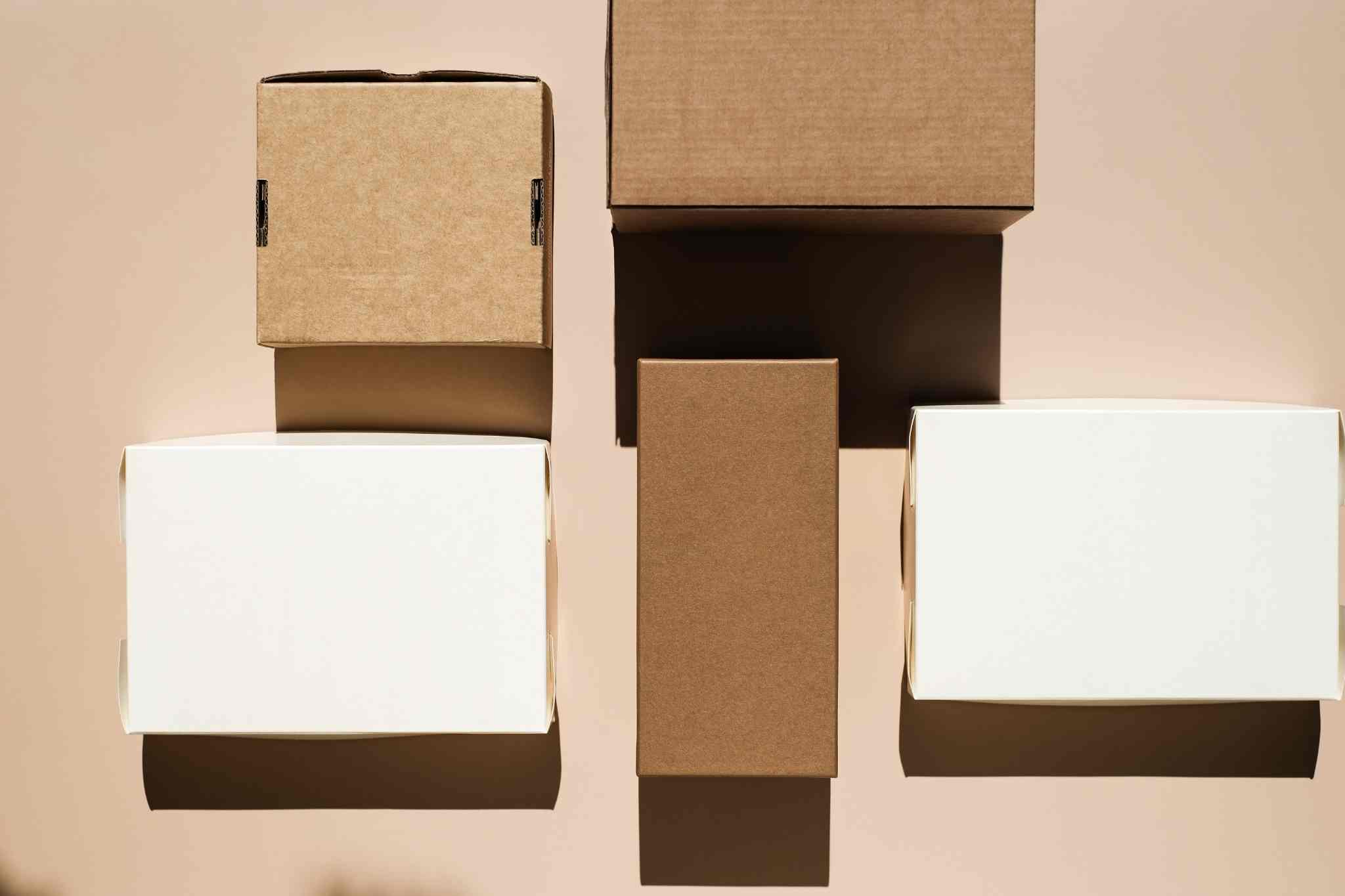Table of Contents
Key Takeaways✔ Choose the right fulfillment model early to prevent delays and unnecessary costs. ✔ Keep inventory accurate to avoid overselling and ensure the correct products ship. ✔ Use packaging that balances cost, protection and customer experience. ✔ Set clear delivery timelines to build trust and manage expectations. ✔ Monitor key performance metrics regularly to spot and fix issues quickly. ✔ Plan scalable systems and partnerships to handle more orders without problems. |
Starting a subscription box business can be a lucrative venture. In fact, the global subscription box market size reached USD 37.5 billion in 2024 and is expected to grow to USD 116.2 billion by 2033. However, managing fulfillment isn’t the easiest feat.
If orders are delayed, inventory runs out, or packaging costs get out of control, it can hurt both customer satisfaction and profits. Many startups face these issues because they underestimate how complex subscription box fulfillment can be.
Here are six practical tips that can help startups avoid these costly mistakes and build a strong foundation for growth.

6 Essential Tips for Subscription Box Fulfillment Success
1. Choose the Right Fulfillment Model
Choosing the right fulfillment model is one of the most important steps in subscription box fulfillment. Picking the right approach early helps reduce costs and keeps customers happy by making sure boxes arrive on time. There are two main options: in-house fulfillment and using a third-party provider.
In-House Fulfillment
In-house fulfillment means the startup handles everything on its own, from storing products to packing boxes and shipping them out. This method gives full control over the process but can also be time-consuming and expensive as the business grows.
- Full Control Over Operations: The startup can manage how products are stored, packed, and shipped, which is great for maintaining quality standards. Having this level of control is useful for businesses that want to maintain a strong brand experience for their subscription box fulfillment.
- Higher Time Commitment: All tasks, including pick and pack fulfillment, are managed by internal staff, which can take away focus from growing the business. Handling warehousing for subscription boxes alone can quickly overwhelm small teams as order volume rises.
- More Costs As Volume Grows: More orders mean more labor, storage, and shipping costs. Without the right planning, the expenses related to recurring shipment logistics can become a major burden.
Third-Party Fulfillment (3PL)
Third-party fulfillment, also known as a subscription box 3PL, involves outsourcing fulfillment to an external company. This company specializes in recurring shipment logistics and can handle large volumes with efficiency.
- Access To Expertise: Third-party providers are experienced in pick and pack fulfillment, warehousing for subscription boxes, and shipping. They have proven systems in place, which can help startups avoid costly mistakes and delays.
- Scalability: 3PL services are built to handle growth. They can easily manage higher order volumes without requiring the startup to invest in new warehouse space or hire additional staff.
- Potential Cost Savings: Working with a 3PL can help secure better shipping rates and reduce the need for a large warehouse or team. This often makes subscription box fulfillment more efficient and less expensive over time.
Why Choosing Early Saves Costs
Selecting the right fulfillment model early prevents problems later on. Switching from in-house to a 3PL after the business has grown can be expensive and disruptive.
- Avoid Disruptions: A sudden change in how orders are fulfilled can delay shipments and upset customers. Early planning allows smooth recurring shipment logistics without risking customer satisfaction.
- Control Expenses: Planning ahead makes it easier to manage costs tied to labor, storage, and shipping. Businesses that choose the right warehousing for subscription boxes from the start can better control expenses as they scale.
- Support Long-Term Growth: The right choice will make it easier to handle more orders as the business grows without hurting customer satisfaction. Choosing a scalable pick and pack fulfillment solution now allows startups to focus on improving their products and marketing efforts.
2. Maintain Accurate Inventory Management
Accurate inventory management is one of the most important parts of subscription box fulfillment. When inventory is not tracked correctly, it can lead to overselling items, shipping delays, or missed orders. Startups can avoid these problems by keeping clear records of what is in stock and what is running low.
Why Inventory Tracking Matters
Having a good inventory system helps subscription box businesses know exactly how many products are available. It also makes it easier to prepare for upcoming orders and manage recurring shipment logistics, which keeps customers happy and prevents wasted time and money.
- Avoid Delays: Proper tracking ensures all products are ready for the next shipment so orders do not get held up. Accurate inventory counts help startups meet deadlines for pick and pack fulfillment and avoid customer complaints.
- Prevent Overselling: When a product is sold out, a good system will stop new orders before it creates backlogs. This helps businesses maintain trust and keeps customers from being disappointed when items are no longer available.
- Track Product Movement: Startups can see what items are popular and when restocking is needed. By reviewing product movement, companies can plan ahead for future sales and better manage warehousing for subscription boxes.
Use Reliable Software Tools
Using the right tools makes inventory management much easier. Instead of manually counting stock, digital systems automatically track products as they move through subscription box 3PL and shipping operations.
- Inventory Management Platforms: Software can send alerts when stock is running low and automatically update quantities after each sale. These tools also reduce manual errors and make subscription box fulfillment smoother for growing startups.
- Integrated Shipping Solutions: Connecting inventory tools to carriers helps ensure accurate tracking during warehousing for subscription boxes. This creates a faster process by linking shipping details directly to the inventory system.
- Reporting Features: Reports show sales trends and help predict future inventory needs. Analyzing these reports allows businesses to adjust stock levels for recurring shipment logistics and avoid last-minute shortages.
3. Optimize Packaging Choices
Startups often focus on how the box looks but forget how packaging can affect costs and efficiency. Choosing the right packaging helps make a strong impression while keeping expenses low. This is especially important when working with subscription box 3PL services or managing pick and pack fulfillment operations.
Balance Aesthetics And Cost Efficiency
It is tempting to go all out with custom designs and high-end materials, but that can quickly become expensive. Choosing packaging that balances brand image and budget makes recurring shipment logistics smoother and more sustainable.
- Use Standard Box Sizes: Using common box sizes reduces material costs and ensures products fit easily during warehousing for subscription boxes. Standard sizing also helps lower shipping fees since carriers calculate based on dimensional weight.
- Find Affordable Branding Options: Printing a fully custom box can be costly, especially for startups managing subscription box 3PL partners. A cost-effective alternative is using branded tape, stamps, or stickers to maintain a unique look while controlling expenses.
- Limit Excessive Inserts: Including too many flyers or additional items can drive up costs and lead to clutter for customers. Focusing on one well-designed insert can keep packaging simple and effective while streamlining pick and pack fulfillment processes.
Choose Eco-Friendly And Size-Appropriate Materials
Eco-friendly packaging is a growing expectation from customers, and it can also help cut costs if done right. It makes recurring shipment logistics easier by using materials that are readily available and consistent in quality.
- Opt For Recyclable Or Compostable Materials: Recyclable cardboard boxes and compostable mailers are better for the environment and easier for customers to dispose of responsibly. This approach also appeals to eco-conscious buyers and builds brand loyalty in subscription box fulfillment.
- Match Box Size To Product Size: Oversized boxes waste packaging materials and increase shipping fees because of higher dimensional weight. Using the smallest size that still protects items helps improve efficiency in pick and pack fulfillment.
- Use Minimal Padding: Lightweight fillers like recycled kraft paper or biodegradable packing peanuts protect products without adding significant shipping weight. This keeps costs low while maintaining product safety during warehousing for subscription boxes.

4. Set Realistic Delivery Expectations
Startups in subscription box fulfillment often struggle with customer dissatisfaction when delivery times are unclear or unrealistic. Setting honest timelines and sharing them clearly can build trust and reduce issues in the long run.
How to Ensure Clear Communication of Delivery Times
Customers want to know when their subscription box will arrive. If the timeline is vague or promises are missed, it can lead to frustration and lost trust. Clear communication helps set the right expectations and ensures customers stay satisfied with the service.
- Use Transparent Messaging: Let customers know exactly when their box will be shipped and the estimated arrival date, as clear communication builds trust in the subscription box 3PL provider’s reliability. With 89% of consumers more likely to make another purchase after a positive customer service experience, consistent updates can directly increase repeat orders.
- Explain Possible Delays: Inform customers ahead of time about factors that could slow down the process, such as holidays or unexpected supply issues. When customers are prepared, they are more understanding.
- Provide Real-Time Updates: Sending order tracking links or status emails allows customers to follow their shipment. This small effort can greatly improve their experience and reduce unnecessary inquiries.
How to Set Realistic Timelines to Reduce Complaints
Many customer complaints come from unmet expectations. Businesses that set delivery timelines they cannot keep create disappointment and potential churn. Realistic timelines, even if slightly longer, help prevent negative experiences.
- Avoid Overpromising: It may be tempting to advertise faster delivery times, but failing to meet them can damage the company’s reputation. Setting realistic dates builds trust and keeps customers satisfied.
- Plan Around Logistics: Subscription box fulfillment often includes multiple steps, such as pick and pack fulfillment and recurring shipment logistics. Factoring in each step when giving delivery estimates helps ensure accuracy.
- Build In Buffer Time: Adding a small buffer for delays in warehousing for subscription boxes or shipping ensures that most orders arrive on time or even earlier than expected. Customers will appreciate this consistency.
5. Monitor Fulfillment KPIs Regularly
Monitoring key performance indicators (KPIs) is an essential part of subscription box fulfillment. Tracking the right numbers helps startups see how their processes are working and where things might be going wrong. This approach is especially important when working with a subscription box 3PL or managing pick and pack fulfillment in-house.
Key Metrics To Watch
Focusing on the most important metrics makes it easier to understand how well fulfillment is running. These are the top KPIs that every startup should track:
- Order Accuracy: Measures how often customers receive the correct products in their boxes. A high order accuracy rate reduces returns and increases customer trust.
- Delivery Speed: Tracks how fast orders go out from the warehouse and reach customers. Faster delivery improves customer satisfaction and reduces questions about order status.
- Inventory Levels: Shows how much stock is on hand at any given time. Keeping the right amount of inventory prevents overselling and delays, which is especially important in recurring shipment logistics.
- Return Rate: Indicates how many boxes are returned and why. Understanding this can reveal product or packaging issues that need fixing.
- Customer Complaints: Tracks the number and type of fulfillment-related complaints. Fewer complaints mean smoother warehousing for subscription boxes and better customer experiences.
How Monitoring Helps Identify and Fix Issues Quickly
Watching these KPIs regularly makes it easier to catch problems before they grow. For example:
- Spot Trends Early: If order accuracy drops, the team can check packing procedures right away and correct mistakes in the pick and pack fulfillment process.
- Adjust Processes Faster: Tracking delivery speed can show if a shipping carrier is underperforming, giving startups the chance to switch providers quickly.
- Prevent Stock Shortages: Inventory tracking helps avoid running out of products, which can cause missed shipments and hurt customer satisfaction.
6. Plan for Scalability
Growing a subscription box business requires planning ahead, especially when it comes to fulfillment. If processes cannot handle an increase in orders, customers may face delays, mistakes, or missing items.
Build Flexible Processes
A startup must make sure its fulfillment systems can adjust as order volumes change. Whether managing subscription box fulfillment in-house or through a subscription box 3PL (third-party logistics), flexibility helps avoid problems when demand increases.
- Use Scalable Software: Choosing software that can track orders, inventory, and shipping across multiple channels allows the business to handle more subscribers without errors.
- Plan Space and Staff Needs: Preparing warehousing for subscription boxes with extra space and trained staff ensures faster processing when more orders arrive.
Partner With The Right Fulfillment Providers
A business should look for fulfillment partners who can grow with them. This is especially important when using services like pick and pack fulfillment and recurring shipment logistics.
- Evaluate Capacity: A partner must have enough warehouse space and resources to handle higher order volumes.
- Check Technology: Providers using advanced tools can integrate easily with a company’s existing systems for smooth subscription box fulfillment.
- Review Experience: Providers with a strong background in warehousing for subscription boxes are more likely to handle growth without delays or mistakes.
Stay Ready For Volume Surges
Unexpected surges in orders can happen during promotions or holiday seasons. Being prepared prevents late shipments and customer frustration.
- Maintain Safety Stock: Keeping extra items in inventory helps meet increased demand without running out of stock.
- Build Communication Plans: Clear updates to customers about delivery timelines can reduce complaints when there are temporary delays.
Frequently Asked Questions (FAQs)
What is subscription box fulfillment?
Subscription box fulfillment is the process of storing, packing, and shipping products to customers who receive boxes on a recurring schedule. It includes managing inventory, assembling boxes, and handling shipping logistics. Businesses often use subscription box 3PL providers or manage pick and pack fulfillment themselves. This process ensures customers get their boxes on time every cycle.
How does a subscription box work?
A subscription box works by allowing customers to sign up and receive curated products on a set schedule, like monthly or quarterly. Once they subscribe, the company prepares and ships boxes automatically until the customer cancels. This model uses recurring shipment logistics to manage ongoing deliveries. It provides convenience and surprises for customers while giving businesses predictable revenue.
What is the difference between a package and a subscription?
A package is a single delivery of items purchased once, while a subscription is an ongoing service where customers receive boxes regularly. Subscriptions use automatic billing and recurring shipments, unlike one-time purchases. Subscription box fulfillment focuses on repeat deliveries rather than individual orders. This difference makes subscriptions more consistent for businesses.
How many products are typically in a subscription box?
Most subscription boxes contain between 4 and 8 products, but the exact number depends on the type of box and its price point. Some boxes include fewer high-value items, while others focus on multiple smaller products. Companies plan the contents carefully to balance cost and customer experience. Warehousing for subscription boxes helps store enough inventory to maintain consistency.
Is a subscription box a good business?
A subscription box can be a good business if it targets the right audience and manages costs well. The recurring revenue model offers predictable income and strong customer relationships. However, poor planning in areas like pick and pack fulfillment or shipping can lead to losses. Success depends on careful pricing, quality products, and efficient operations.
 Maximize Subscription Box Fulfillment Success With 3PL Logistics By Best
Maximize Subscription Box Fulfillment Success With 3PL Logistics By Best
Partnering with 3PL Logistics By Best in New York City ensures subscription box fulfillment is handled with precision and care. From pick and pack fulfillment to recurring shipment logistics, every step is managed by experts who understand the unique needs of subscription businesses. With warehousing for subscription boxes located in New York City, operations remain fast, reliable, and cost-effective.
Contact 3PL Logistics By Best today to discuss tailored fulfillment solutions!

